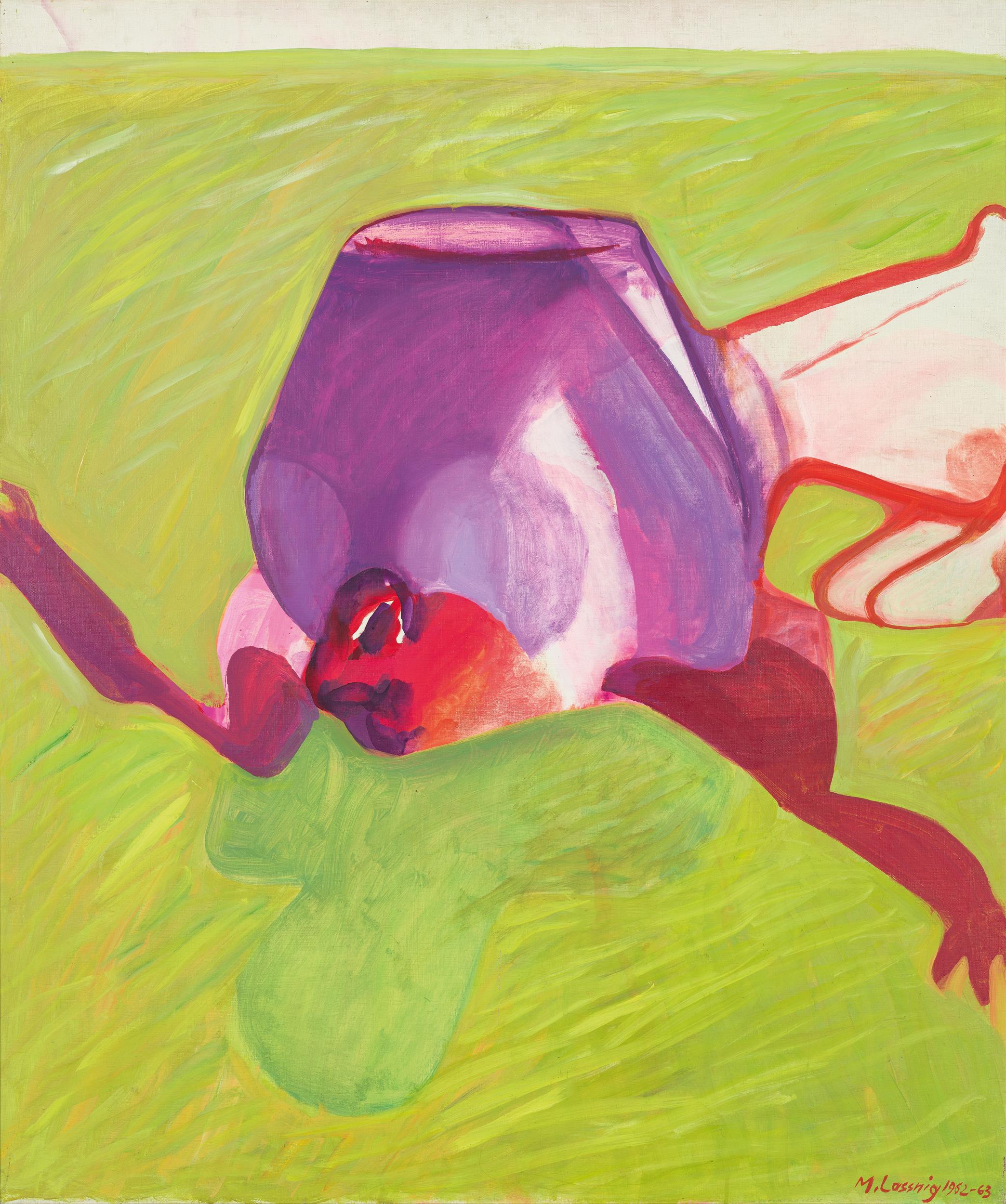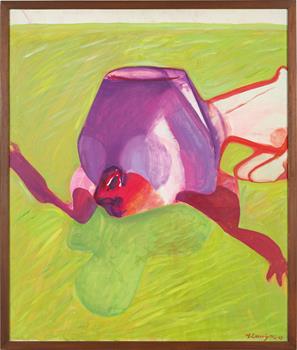0043
Maria Lassnig*
(Kappel am Krappfeld/Kärnten 1919 - 2014 Wien)
„"Gefallenes Mädchen"“
1962/63
oil on canvas; framed
120 x 100 cm
signed and dated on the lower right: M. Lassnig 1962-63
study on the reverse, c. 1959/60
Provenance
directly from the artist;
formerly collection Otto Breicha;
since then private property, Vienna
Exhibition
2010 Kulturverein Greith-Haus, St. Ulrich im Greith
Literature
Kulturverein Greith-Haus, Helena Wallner (Hg), Klassiker der Moderne, Von A wie Attersee bis Z wie Zeppel-Sperl. St. Ulrich im Greith 2010, p. 22.
Estimate: € 250.000 - 500.000
Hammer price: € 350.000
Auction is closed.
At the end of November 1960, the 41-year-old Maria Lassnig left Vienna and moved to the “centre of the art-brewing cauldron”, Paris (Maria Lassnig, in: Natalie Lettner, Maria Lassnig. Die Biografie [The Biography], Vienna 2017, p. 152). She cites artistic and private reasons for this decision: “At the time, the Actionists had already started. It got on my nerves, all that masculine posturing. As a woman, I was also deeply disappointed because I was constantly being cheated on. It was pretty crowded in Vienna. There were four men around the Galerie St. Stephan [Wolfgang Hollegha, Josef Mikl, Markus Prachenksy and Arnulf Rainer, with whom Maria Lassnig also had a brief affair] and I had no place there. I simply didn't want to be here anymore.” (Maria Lassnig, in: Lettner, p. 151). Even though she had received recognition as a member of the Art Club, with exhibitions at the Strohkoffer and, as one of the few women, a solo exhibition at the Galerie St. Stephan as well, she left Austria. This was a pattern that would later be repeated in France, when, well-connected and having achieved her first exhibition successes, she would pull up stakes and head for New York in 1968.
With her first abstract paintings of bodily feelings and “Tachistische Knödelselbstportraits” (“Tachist dumpling self-portraits”) of the 1950s, Maria Lassnig “opens up a vast, unknown terrain, such as few artists have entered, even at the beginning of the modern era” (Wolfgang Drechsler, introductory text in: Maria Lassnig, exhibition catalogue, Museum Moderner Kunst Stiftung Ludwig Wien, 20er Haus, Vienna; Musée des Beaux-Arts de Nantes, Nantes 1999). The body is not painted as seen from the outside, but as felt from the inside. The line becomes an expression of the artist’s own physiological state.
In the early 1960s, the figurative returned, becoming the expression of a painterly introspection. Highly concentrated and with meditative slowness, Maria Lassnig painted bodily feelings, sometimes with her eyes closed, lying next to the canvas. Body sensations are also expressed by means of colour. “Pressure points, tensions, compressions and stretchings – absolutely every ‘small’ feeling is recorded on the canvas" (Maria Lassnig. Das neunte Jahrzehnt [ “The ninth decade”]), exhibition catalogue, Museum Moderner Kunst Stiftung Ludwig, Vienna 2009, p. 31) and connoted in colour.
In this picture we see an eyeless head with an enormously bloated brain that sightlessly refuses to communicate with the viewer. This outsized form is accompanied by a pale-looking body outlined in red, with bent knees and helplessly flailing arms. Only the chin, rendered in vibrant red and reminiscent of an animal’s snout, looks determined. Such hybrid hermaphrodites and the artificial colouring, in which shades of red and purple contrast with vivid yellowish-green backgrounds, are typical of Maria Lassnig's work, which is among the most important that Austrian contemporary art has produced, even by international standards.
(Sophie Cieslar)



